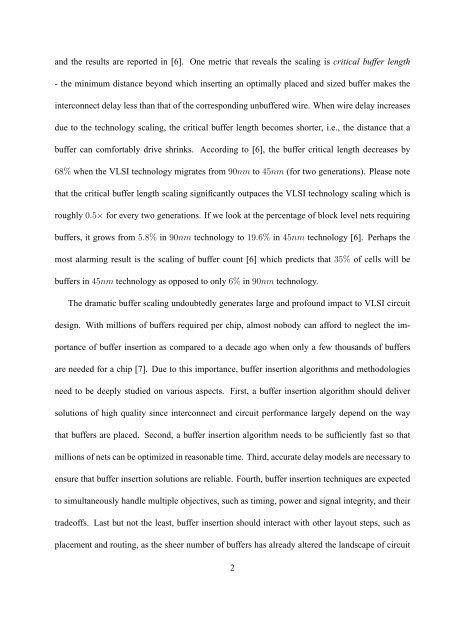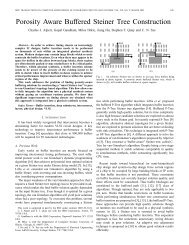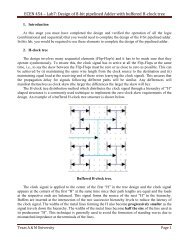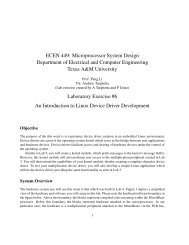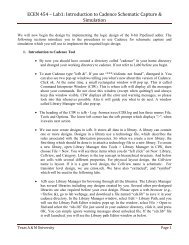Buffer Insertion Basics - Computer Engineering & Systems Group ...
Buffer Insertion Basics - Computer Engineering & Systems Group ...
Buffer Insertion Basics - Computer Engineering & Systems Group ...
Create successful ePaper yourself
Turn your PDF publications into a flip-book with our unique Google optimized e-Paper software.
and the results are reported in [6]. One metric that reveals the scaling is critical buffer length<br />
- the minimum distance beyond which inserting an optimally placed and sized buffer makes the<br />
interconnect delay less than that of the corresponding unbuffered wire. When wire delay increases<br />
due to the technology scaling, the critical buffer length becomes shorter, i.e., the distance that a<br />
buffer can comfortably drive shrinks. According to [6], the buffer critical length decreases by<br />
68% when the VLSI technology migrates from 90nm to 45nm (for two generations). Please note<br />
that the critical buffer length scaling significantly outpaces the VLSI technology scaling which is<br />
roughly 0.5× for every two generations. If we look at the percentage of block level nets requiring<br />
buffers, it grows from 5.8% in 90nm technology to 19.6% in 45nm technology [6]. Perhaps the<br />
most alarming result is the scaling of buffer count [6] which predicts that 35% of cells will be<br />
buffers in 45nm technology as opposed to only 6% in 90nm technology.<br />
The dramatic buffer scaling undoubtedly generates large and profound impact to VLSI circuit<br />
design. With millions of buffers required per chip, almost nobody can afford to neglect the importance<br />
of buffer insertion as compared to a decade ago when only a few thousands of buffers<br />
are needed for a chip [7]. Due to this importance, buffer insertion algorithms and methodologies<br />
need to be deeply studied on various aspects. First, a buffer insertion algorithm should deliver<br />
solutions of high quality since interconnect and circuit performance largely depend on the way<br />
that buffers are placed. Second, a buffer insertion algorithm needs to be sufficiently fast so that<br />
millions of nets can be optimized in reasonable time. Third, accurate delay models are necessary to<br />
ensure that buffer insertion solutions are reliable. Fourth, buffer insertion techniques are expected<br />
to simultaneously handle multiple objectives, such as timing, power and signal integrity, and their<br />
tradeoffs. Last but not the least, buffer insertion should interact with other layout steps, such as<br />
placement and routing, as the sheer number of buffers has already altered the landscape of circuit<br />
2


